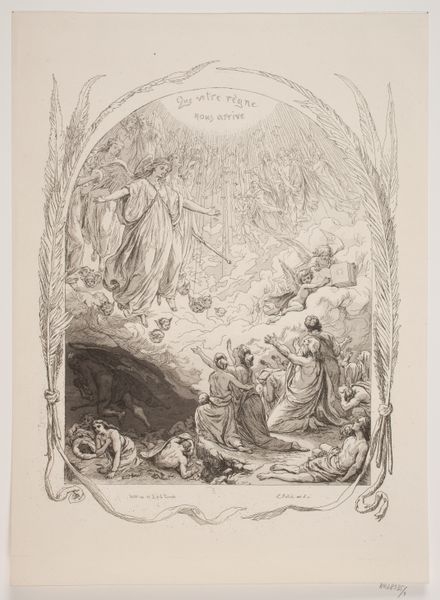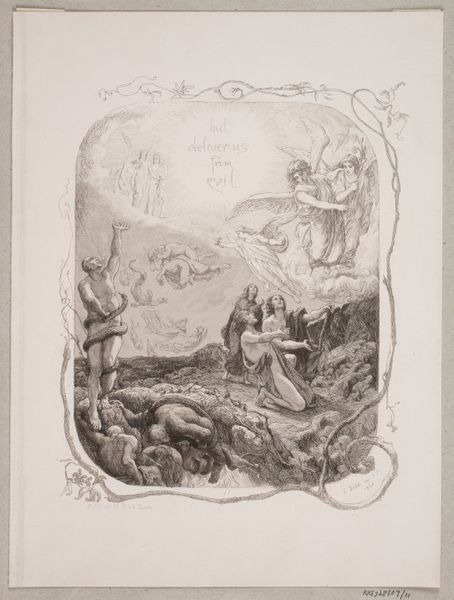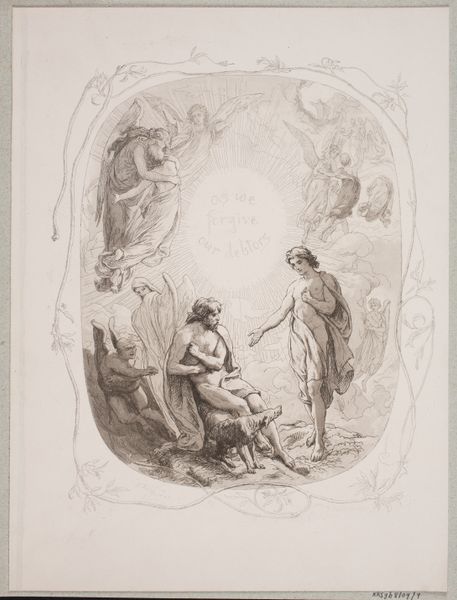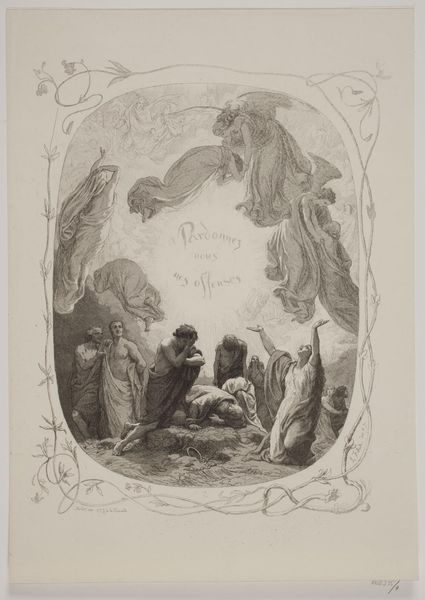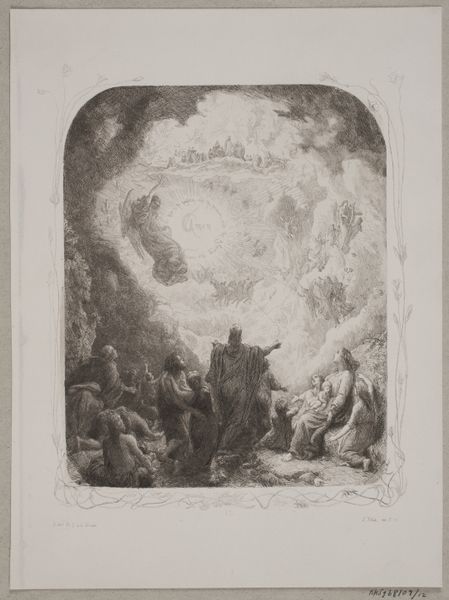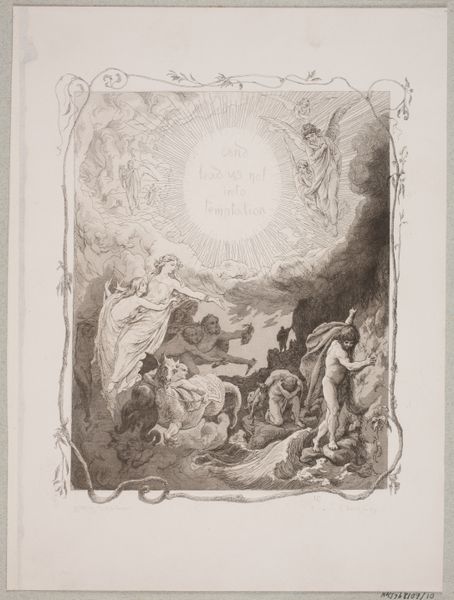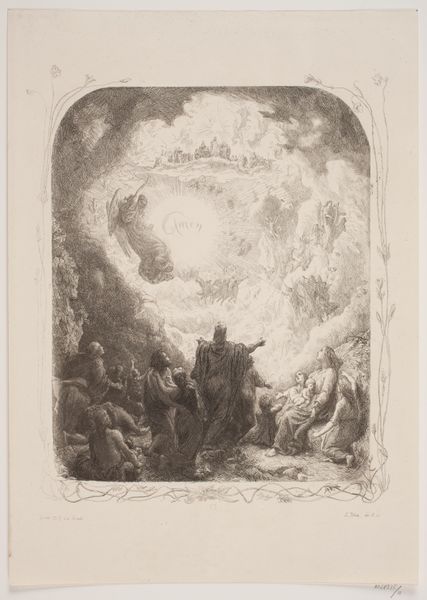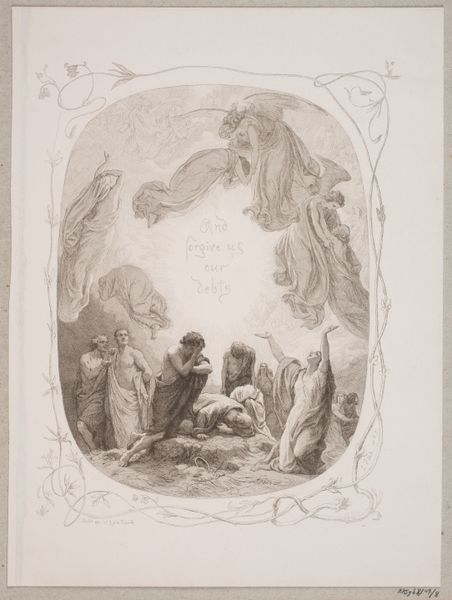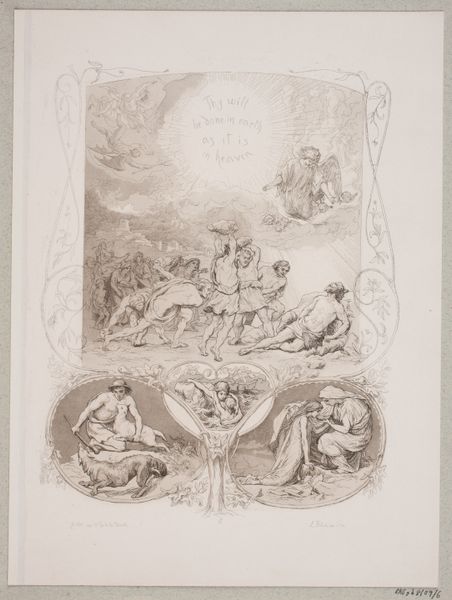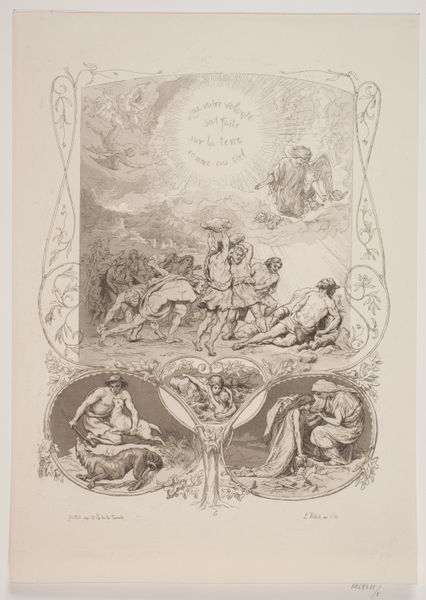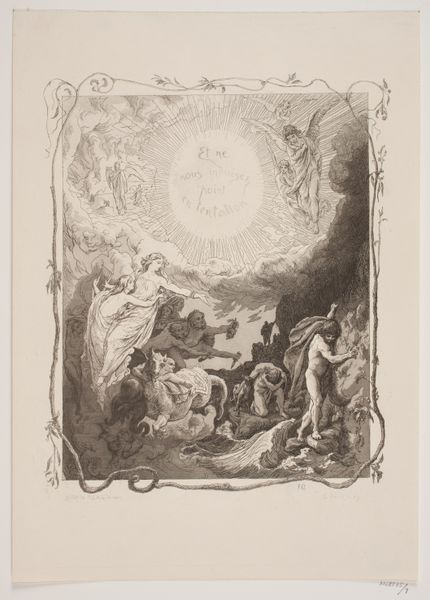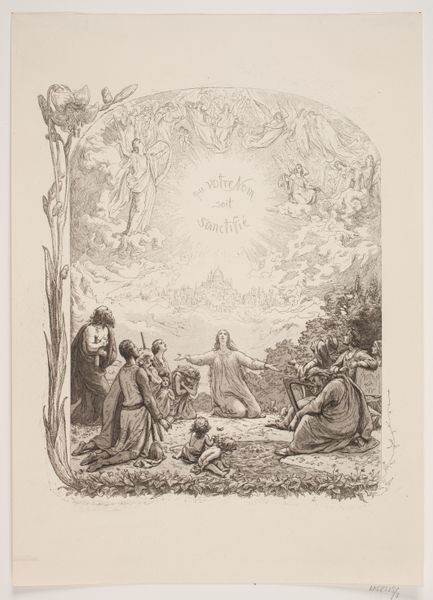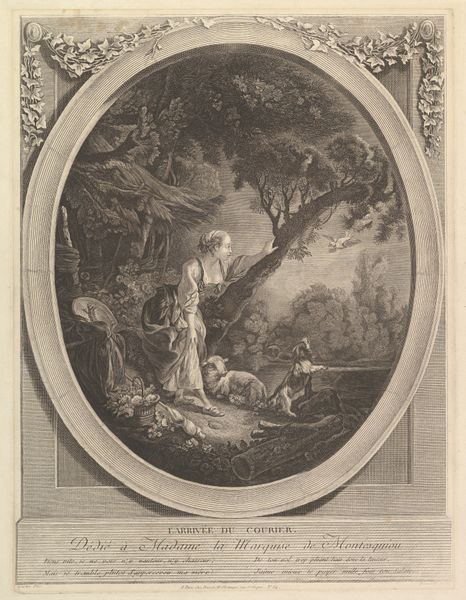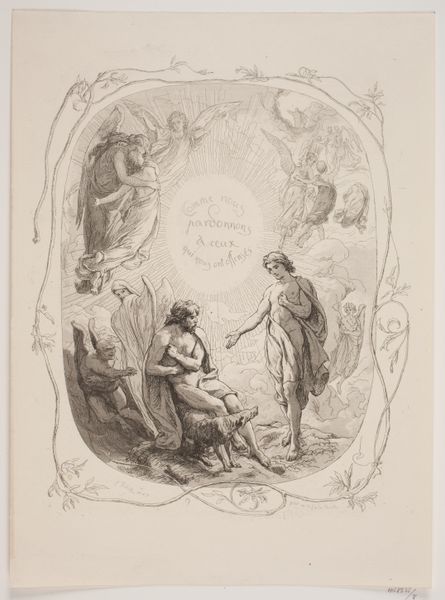
Dimensions: 307 mm (height) x 229 mm (width) (bladmaal)
Curator: Welcome. Today we are looking at Lorenz Frølich's "Illustration til 'The Lord's Prayer'", created in 1863, an engraving on paper currently held at the SMK. Editor: My first impression is of light and darkness, almost theatrical. Look at the upper register filled with angelic figures in radiant light, contrasted with the supplicants struggling in shadow below. Curator: It certainly uses strong contrasts. Frølich was working within a Romantic sensibility, so dramatic depictions of faith and morality were common. This particular work visualizes a specific section of the Lord's Prayer, the appeal "Thy Kingdom Come." It reflects the social and religious ideals of 19th-century Denmark, a time when national identity was being forged. Editor: The engraving technique is superb. Consider the density of lines used to create the shadowed figures, compared to the ethereal, almost vanishing lines of the angels. The physicality of the labor is intense. It’s demanding work cutting those lines into the metal to produce the matrix, let alone printing each image. Curator: Absolutely, and the print medium itself played a role in disseminating religious ideology to a wider public. Prints democratized imagery, bringing religious art into homes and communities. What strikes me is Frølich’s clever manipulation of scale, from the monumental angels to the more intimate human figures. Editor: Scale works to communicate a clear social hierarchy. This piece is so reliant on line and contrast. The light isn't just divine; it functions to highlight, elevate, and therefore further reinforce this hierarchy. Curator: Interesting point. Also consider how institutions like the church played a central role in promoting such artistic production and dictating its content. Editor: For me, it really comes down to how Frølich's choice of medium emphasizes labor, making us consider not just the image but the making of it and its subsequent distribution, bringing "God's word," so to speak, to the masses through repetitive, painstaking craft. Curator: Yes, by framing the art in terms of its accessibility and the artist's craftsmanship, it changes the perspective on what constitutes sacred art. It makes you think about faith in social action. Editor: And on the power and control that art and religion held and wielded together during that period. Curator: A lot to consider from one engraving! Editor: Precisely.
Comments
No comments
Be the first to comment and join the conversation on the ultimate creative platform.
